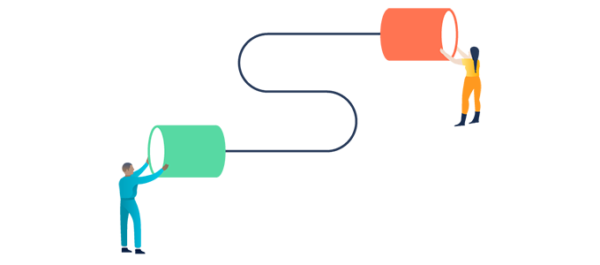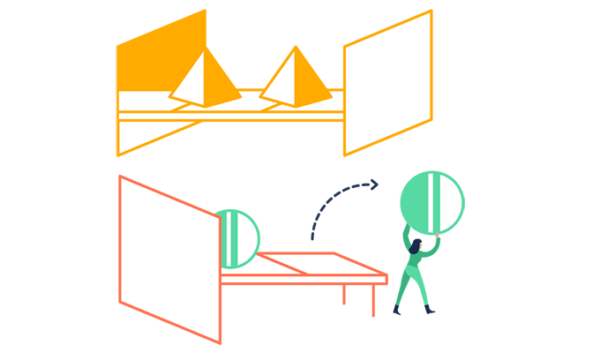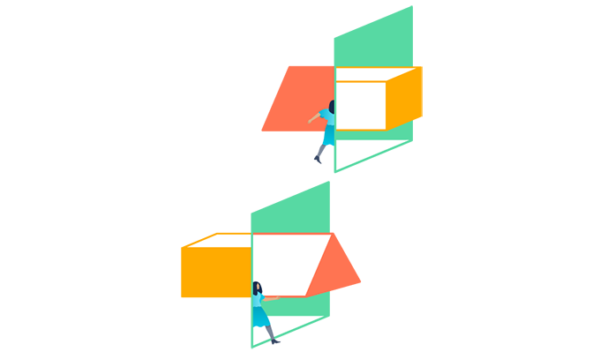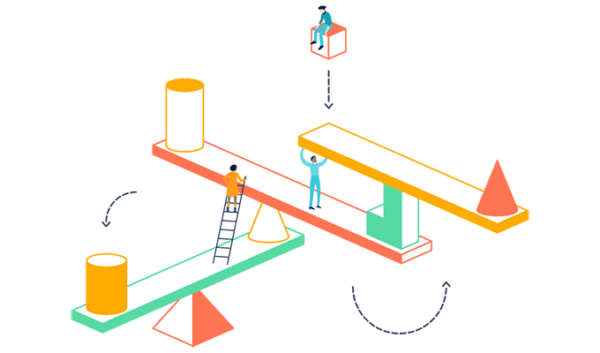What is ChatOps? A guide to its evolution, adoption, and significance
The most innovative teams of the last 15 years, have devised a new way of collaborating. Driven by the demands of running global services built for billions of users, software and IT teams evolved from email to chat… and then, to ChatOps.
I am the product of AIM. I can hear that door swinging open and closed in my mind with absolute fidelity. I’d recognize that ding anywhere.

At 15, as I typed away into AOL IM, I never imagined that chat could turn into a tool powering some of the greatest innovation in business, technology, science, and beyond. There’s even a name for this phenomenon: ChatOps.
What is ChatOps? Conversations, put to work
ChatOps is a collaboration model that connects people, tools, process, and automation into a transparent workflow. This flow connects the work needed, the work happening, and the work done in a persistent location staffed by the people, bots, and related tools. The transparency tightens the feedback loop, improves information sharing, and enhances team collaboration. Not to mention team culture and cross-training.
Conversation-driven collaboration isn’t new, but ChatOps is its digital-age manifestation: a combination of the oldest form of collaboration with the newest technology. And this surprisingly simple combination will change the way you work.
Conversation is the force that lets people work together and learn together and create new things. It’s foundational to all human progress. This progress is accelerating. While it’s too subtle for us to appreciate in one lifetime, the world is collaborating at an exponential pace and every year it accelerates.
Software teams lead the way

Mark Andreessen famously said that “Software is eating the world,” so it’s no surprise that software teams have led the way in finding new ways to work. Even things that aren’t software are being transformed by software: taxis (Uber), communication (Twitter), fitness (Fitbit), movies (Netflix)… the list goes on.
These, the most innovative teams of the last 15 years, have devised a new way of collaborating. Driven by the demands of running global services built for billions of users, software and IT teams evolved from email to chat. They also replaced repetitive tasks with automation, and replaced annual change control meetings with DevOps‘ continuous collaboration.
And they pulled it all together into a central tool like Hipchat. That’s ChatOps in a nutshell.
The humanization of work

ChatOps combines a powerful way to get things done with a more human way of working. But it doesn’t happen overnight. I like to think of the various stages of ChatOps adoption like the history of space exploration.
Stage 1: Sputnik
Teams at this stage of ChatOps are trying group chat in pockets to see if it works and if people like it. Email is still primary for communications, but chat is finding a role. At this stage, it’s truly a test flight. Think: people sending messages or sharing files.
Stage 2: Mercury
Teams at this stage have tried chat and are experimenting with moving certain conversations or workloads to persistent chat rooms. These rooms are replacing email threads and meetings and are starting to evolve into new chat-based workflows.
Because teams are starting to get comfortable creating and sharing information in context-specific rooms, they start to realize the real-time benefits – as well as the transparency effect where everyone knows what everyone knows. This tends to accelerate team chat growth because it represents a new way to drive new hire onboarding, learning, and development in a lightweight way.
As the members of a chat room perform their work, pull, share, or display information, others start to learn how to accomplish the same task. They develop a shared vision and establish a perspective on how their work impacts or informs others.
The cultural, educational, and onboarding benefits of ChatOps become apparent in this stage as employees opt into the conversation (vs. opting out) to review a training manual, seminar, or video.
Stage 3: Gemini
At this stage, full teams are using chat and workloads are transitioning from legacy systems to chat. Chat users who have reached this stage tend to find working the old way unimaginable.
Highly technical teams have started to implement “slash commands” that mimic working from a command-line terminal and some bot-based integrations. For the most part, these integrations play a small role. But awareness of the possibilities of chat are driving exploration across technical and non-technical teams.
The transformational experience at this stage typically involves users discovering that the fastest track to the information they seek may actually be found within chat – either through conversation, or a simple in-chat query – rather than through traditional task switching and navigation around an app.
Stage 4: Apollo
At the Apollo stage, teams have moved off email for almost all intra-team communication and have started to evangelize chat outside of their teams because they see the value of the whole organization being on chat.
Technical teams have begun automating common tasks with advanced bots, while non-technical teams have started to deploy chat-based apps. Workloads are increasingly being done inside of chat and information is being brought into chat for collaboration via integration.
This marks a major transition point as chat has become the place where other apps and data sources are best shared. In a sense, chat has started to become the browser for an increasing amount of data, tools, and collaboration.
Full workloads happen in chatrooms, and process has evolved to be chat-based for both planned and unplanned work. The amount of task switching between apps at this stage has decreased appreciably because teams at this stage can query information and respond directly inside of chat, as well as manage other tools and process from within their chat tool.
Stage 5: Elon Musk
At the extreme end of ChatOps, we see teams that have automated large portions of mission critical work. Advanced custom bots, deep integrations, attempts at AI, and custom engineering have basically turned chat into the operating system for their team.
They are expanding the definition of ChatOps and breaking new ground when it comes to real-time collaboration. They see no limits in how they could combine work, people, and tools to transform the way people on Earth (or eventually, Mars) collaborate.
ChatOps for the people
One of the keys to the success of ChatOps is democratization. It isn’t a product. It isn’t a seminar. It isn’t something you can install. In fact, it’s probably a bit different for every team.
The one thing that doesn’t change, however, is the human aspect of conversation-driven collaboration. If people can continue finding ways to work together better, and if technology can continue to enhance those methods, the things people can create and do are virtually endless and will only keep accelerating.

You often don’t see the biggest changes coming because they happen organically. Chat represents a new way to capture the collective knowledge of a team and use it to drive lasting change in how products are delivered and how people work together. Talking about it doesn’t feel like real change, but once you start working this way, you can’t imagine ever going back to the old way.
Interested in learning more about ChatOps? Check out the rest of our collection.

